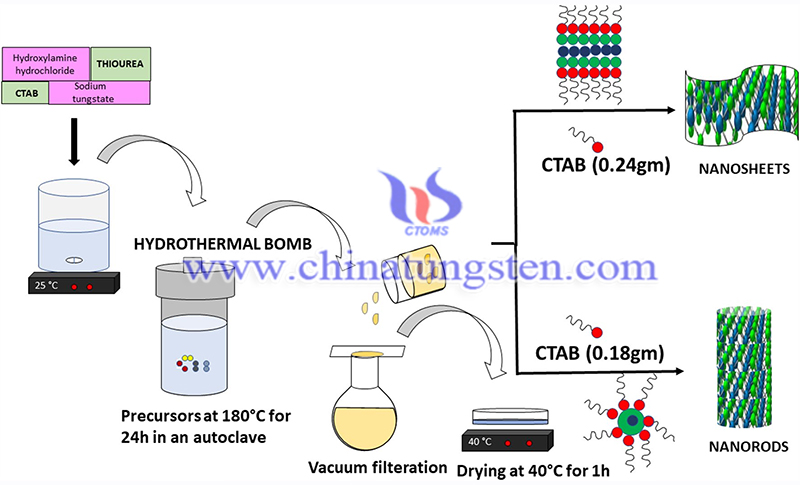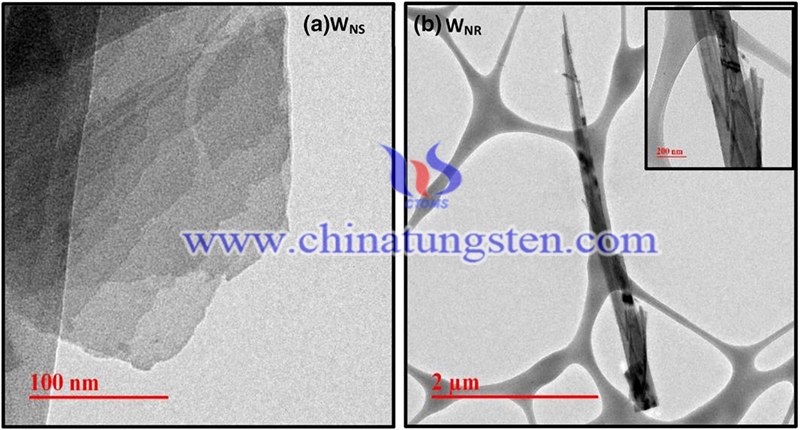Applications of WS2 Nanomaterials in Batteries
- Details
- Category: Tungsten Information
- Published on Wednesday, 31 August 2022 21:57
As potential high-capacity anode materials for Lithium-ion batteries (LIBs), TMDCs have gained considerable attention, especially WS2 nanomaterials, which exhibit a higher theoretical specific capacity (433 mAh.g-1) than commercial graphite due to the 2D layer structure and the large platelet space. When used as an anode for lithium-ion batteries, WS2 exhibits an increasing lithium storage capacity. For example, Liu et al. prepared an ordered mesoporous WS2 as an anode for LIBs, which showed a high lithium storage capacity of 805 mAh.g-1 at a current of 0.1A.g-1.
LIBs are widely used in various areas of life, such as portable electronics, electric vehicles, and grid-level energy storage systems, due to their high specific energy, high efficiency, and long storage life. Currently, the most widely used anode material in commercialized LIBs is graphite. However, conventional graphite anodes have an inherently low theoretical specific capacity (372 mAh.g-1), which limits the development of graphite for LIBs.

(Picture source: Ashraf et al./ Applied Nanoscience)
In addition, Wang et al. investigated the lithium insertion behavior of WS2 nanomaterials with a discharge capacity of ~915 and 610 mAh.g-1 in the first and second cycles, respectively. However, two problems hinder the wide application of WS2-based lithium-ion batteries. The first problem is the volume change during Li+ intercalation/deintercalation. The other problem is poor electrical conductivity, which leads to the destruction of the geometry during cycling.
Both of these problems eventually lead to a decrease in the cycling stability of the electrode. A feasible strategy is to combine nano-WS2 with conductive carbon matrices, including graphene, hollow carbon, and amorphous carbon materials, to increase conductivity and buffer large volume changes in WS2 electrodes. Graphene has outstanding electrical conductivity and mechanical strength, making it an ideal composite material.
For example, Li et al. synthesized multi-sheet nanostructured WS2 nanosheets on RGO (WG) composites, which exhibited better cycling stability and rate performance when used as anode materials for LIBs compared to pristine WS2. The improved cycling stability is attributed to the synergistic effect between RGO and WS2 nanosheets, which can resist the accumulation of WS2 during lithiation/delithiation and promote the rapid transfer of electrons and ions. In addition, hollow carbon materials, such as multi-walled and single-walled carbon nanotubes, have been explored by many researchers.
For example, Kartick et al. investigated a WS2-MWCNT hybrid and found that the composite exhibited a high initial charge capacity (483 mAh.g-1) and enhanced cycling stability, with a capacity retention of more than 80% for the first cycle after 20 cycles, exceeding the capacity retention of only 40% for the original WS2. As a comparison, SWCNTs show higher cell performance than MWCNT blends. three-dimensional WS2-SWCNT foams were synthesized by Ren et al. which showed increasing specific capacity and excellent capacity retention, attributed to the ultra-high conductivity of SWCNTs and excellent mechanical flexibility due to the clever design of the electrode material structure.

(Picture source: Ashraf et al./ Applied Nanoscience)
Interestingly, Liu et al. reported a ternary WS2/CuO/SWCNT porous hybrid, which exhibits a unique sandwich structure, i.e., layered WS2 nanomaterials separated by conductive SWCNT and CuO nanosheets with high electrochemical activity. The additional CuO can be used as an electrochemically active material, which is also beneficial for increasing the specific capacity. Thus, high reversible specific capacity, outstanding rate capability, and aggregable reversible specific capacity can be obtained.
Although greatly improving the electrochemical performance, the high cost of the aforementioned composites is a general drawback. Therefore, amorphous carbon materials, such as Super P, have attracted the attention of researchers. Huang et al. investigated WS2-Super P nanocomposites, which exhibited an initial coulombic efficiency of 81% and a high reversible capacity of ~389 mAh.g-1, with good cycling stability and rate performance.
Similarly, Li et al. synthesized WS2/C composites as anode materials for LIBs, which showed a high reversible specific capacity of 322 mAh.g-1 at a current density of 200 mA-g-1, indicating that WS2/C composites are promising high-performance anode materials for LIBs. These findings indicate the potential progress of amorphous carbon materials in the research of anode materials for LIBs.
Article Source: Sun, CB., Zhong, YW., Fu, WJ. et al. Tungsten disulfide nanomaterials for energy conversion and storage. Tungsten 2, 109–133 (2020).
- Tungsten Manufacturer & Supplier, Chinatungsten Online: www.chinatungsten.com
- Tungsten News & Prices of China Tungsten Industry Association: www.ctia.com.cn
- Molybdenum News & Price: news.molybdenum.com.cn
- Tel.: 86 592 5129696; Fax: 86 592 5129797; Email: sales@chinatungsten.com



 sales@chinatungsten.com
sales@chinatungsten.com